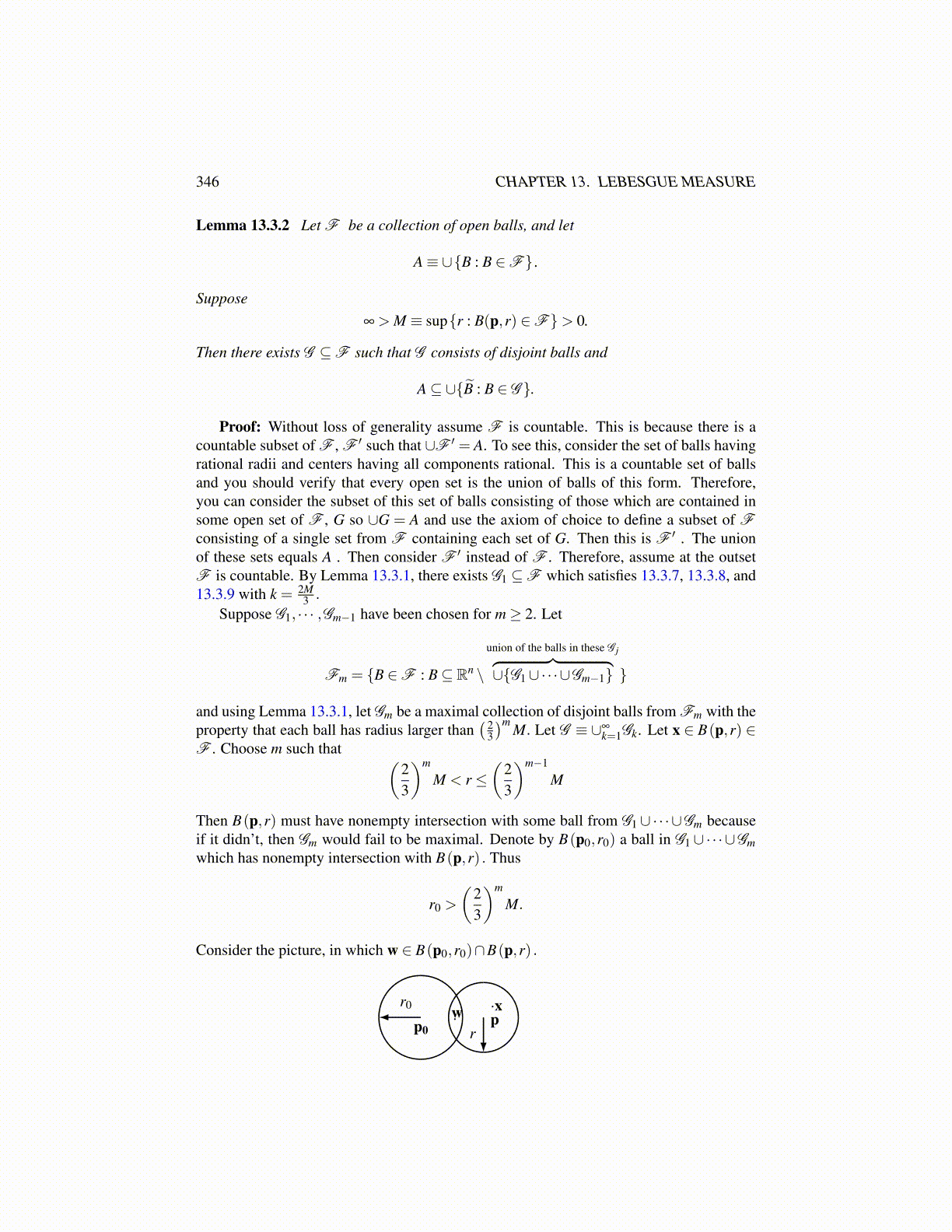
346 CHAPTER 13. LEBESGUE MEASURE
Lemma 13.3.2 Let F be a collection of open balls, and let
A≡ ∪{B : B ∈F} .
Suppose∞ > M ≡ sup{r : B(p,r) ∈F}> 0.
Then there exists G ⊆F such that G consists of disjoint balls and
A⊆ ∪{B̃ : B ∈ G }.
Proof: Without loss of generality assume F is countable. This is because there is acountable subset of F , F ′ such that ∪F ′ = A. To see this, consider the set of balls havingrational radii and centers having all components rational. This is a countable set of ballsand you should verify that every open set is the union of balls of this form. Therefore,you can consider the subset of this set of balls consisting of those which are contained insome open set of F , G so ∪G = A and use the axiom of choice to define a subset of Fconsisting of a single set from F containing each set of G. Then this is F ′ . The unionof these sets equals A . Then consider F ′ instead of F . Therefore, assume at the outsetF is countable. By Lemma 13.3.1, there exists G1 ⊆F which satisfies 13.3.7, 13.3.8, and13.3.9 with k = 2M
3 .
Suppose G1, · · · ,Gm−1 have been chosen for m≥ 2. Let
Fm = {B ∈F : B⊆ Rn \
union of the balls in these G j︷ ︸︸ ︷∪{G1∪·· ·∪Gm−1} }
and using Lemma 13.3.1, let Gm be a maximal collection of disjoint balls from Fm with theproperty that each ball has radius larger than
( 23
)mM. Let G ≡ ∪∞
k=1Gk. Let x ∈ B(p,r) ∈F . Choose m such that (
23
)m
M < r ≤(
23
)m−1
M
Then B(p,r) must have nonempty intersection with some ball from G1∪ ·· · ∪Gm becauseif it didn’t, then Gm would fail to be maximal. Denote by B(p0,r0) a ball in G1 ∪ ·· · ∪Gmwhich has nonempty intersection with B(p,r) . Thus
r0 >
(23
)m
M.
Consider the picture, in which w ∈ B(p0,r0)∩B(p,r) .
w·r0
p0 rp·x